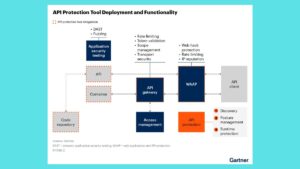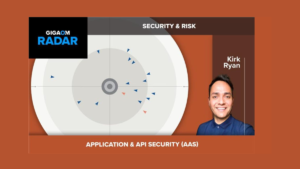Understanding HR Technology and Its Role in Human Resources

The modern workplace is continuously evolving, and Human Resource (HR) technology plays a pivotal role in shaping how businesses manage their workforce. HR technology encompasses the use of software, hardware, and data analytics to automate HR processes, improve employee engagement, and drive organizational growth. As companies seek to streamline operations and enhance employee experiences, the integration of HR technology has become essential.
In this blog, we’ll explore what HR technology is, the key components, its benefits, and how it impacts various HR functions such as recruitment, performance management, and employee development.
What is HR Technology?
HR technology refers to the tools and software used to automate, simplify, and optimize human resource management tasks. It covers a broad range of functions, including recruitment, employee onboarding, payroll management, performance reviews, employee engagement, and learning and development. These technologies help HR departments manage employee data more effectively, make informed decisions, and create a better workplace culture.
The goal of HR technology is to reduce manual administrative tasks, streamline HR workflows, and empower HR professionals to focus on strategic initiatives such as talent development and organizational growth.
Key Components of HR Technology
HR technology consists of various components that work together to manage different aspects of human resources. Some of the key components include:
- Human Resource Information System (HRIS)
- An HRIS is a central database that stores employee information and manages HR processes such as payroll, benefits, and attendance. It enables HR teams to access and update employee data, generate reports, and ensure compliance with legal requirements.
- Applicant Tracking System (ATS)
- An ATS is used to manage the recruitment process, from posting job openings to screening resumes and scheduling interviews. It helps HR teams efficiently track candidates and streamline hiring workflows.
- Payroll Management Software
- Payroll software automates the calculation of employee salaries, tax deductions, and benefits. It ensures timely and accurate payment while complying with local tax laws and regulations.
- Learning Management System (LMS)
- An LMS provides a platform for delivering employee training and development programs. It enables HR teams to manage course content, track employee progress, and assess the effectiveness of training initiatives.
- Performance Management Tools
- These tools are used to set employee goals, monitor performance, and conduct regular performance reviews. They help HR teams identify top performers, address skill gaps, and develop employee career paths.
- Employee Engagement Platforms
- Engagement platforms facilitate employee feedback, surveys, and recognition programs. They help HR teams monitor employee satisfaction and take action to improve workplace culture.
How HR Technology is Transforming Human Resources
The adoption of HR technology is reshaping the traditional roles of HR professionals, enabling them to move away from manual tasks and focus on strategic priorities. Here’s how HR technology is transforming various HR functions:
1. Streamlining Recruitment and Hiring
Recruitment is one of the most important functions of HR, and technology plays a crucial role in optimizing the hiring process. With the help of applicant tracking systems, HR teams can manage large volumes of resumes, filter out unqualified candidates, and schedule interviews seamlessly. Some advanced recruitment platforms even use artificial intelligence (AI) to match candidates with job openings based on skills and experience.
Key Benefits:
- Faster hiring process with automated candidate screening.
- Improved quality of hires through data-driven insights.
- Enhanced candidate experience with a streamlined application process.
2. Enhancing Employee Onboarding
The onboarding process is essential for integrating new employees into the company. HR technology simplifies onboarding by automating tasks such as document collection, training assignments, and introductions to key team members. Some onboarding platforms also provide a digital checklist for new hires, ensuring a smooth transition into their new roles.
Key Benefits:
- Reduced administrative workload for HR staff.
- Consistent onboarding experience for all new employees.
- Faster time-to-productivity for new hires.
3. Automating Payroll and Benefits Administration
Payroll management is a complex task that involves calculating salaries, tax deductions, and employee benefits. Payroll software automates these tasks, reducing errors and ensuring compliance with tax laws. Additionally, benefits administration platforms allow employees to choose and manage their benefits packages through self-service portals.
Key Benefits:
- Improved accuracy in payroll processing.
- Time savings for HR staff with automated benefits administration.
- Better compliance with tax and labor regulations.
4. Optimizing Performance Management
Performance management tools help HR teams set goals, monitor progress, and conduct regular reviews to assess employee performance. These tools also provide insights into employee strengths and areas for improvement, allowing managers to provide targeted feedback and development opportunities.
Key Benefits:
- Clear alignment between employee goals and company objectives.
- Data-driven insights for identifying top performers.
- Enhanced employee development with personalized feedback.
5. Driving Employee Engagement and Retention
Employee engagement is crucial for retaining top talent and creating a positive workplace culture. Engagement platforms enable HR teams to conduct employee surveys, gather feedback, and recognize employee achievements. These tools provide actionable insights into employee satisfaction and help identify areas for improvement.
Key Benefits:
- Increased employee satisfaction and morale.
- Lower turnover rates with proactive engagement strategies.
- Better understanding of employee needs and preferences.
6. Supporting Learning and Development
A learning management system (LMS) enables organizations to deliver training and development programs to employees. The LMS tracks employee progress and measures the effectiveness of training initiatives. Some platforms also offer AI-driven personalized learning paths, tailoring content based on employee skills and career goals.
Key Benefits:
- Continuous employee learning with on-demand access to training.
- Development of new skills and competencies for career growth.
- Enhanced productivity through targeted training programs.
The Role of Artificial Intelligence in HR Technology
Artificial intelligence is a game-changer in HR technology, providing new ways to analyze data, automate tasks, and improve decision-making. Here’s how AI is being used in HR technology:
- AI-Powered Recruitment
- AI algorithms can analyze resumes, screen candidates, and even conduct initial interviews using natural language processing (NLP). This helps HR teams focus on the most qualified candidates while reducing bias in the hiring process.
- Predictive Analytics for Talent Management
- AI can predict employee turnover, identify at-risk employees, and recommend retention strategies. It can also help identify future leaders within the organization based on performance data and career progression trends.
- Chatbots for Employee Support
- AI-powered chatbots can handle employee inquiries related to HR policies, benefits, and payroll. This allows HR teams to provide instant support and free up time for more complex tasks.
Key Benefits of Implementing HR Technology
The adoption of HR technology brings numerous benefits to organizations, including:
- Increased Efficiency: By automating repetitive tasks, HR technology frees up time for HR professionals to focus on strategic initiatives.
- Cost Reduction: Streamlined processes and reduced paperwork lead to lower administrative costs.
- Data-Driven Decision Making: Access to real-time data and analytics enables HR teams to make informed decisions regarding employee management and organizational strategies.
- Improved Compliance: HR technology ensures that organizations adhere to labor laws and regulations by automating compliance-related tasks.
- Enhanced Employee Experience: Digital platforms for HR services improve employee experiences by providing self-service options and faster responses to inquiries.
Popular HR Technology Tools in 2025
Several HR technology tools stand out in 2025 for their comprehensive features and innovative approaches. Here are some popular tools used by businesses:
- Workday
- Offers a complete suite of HR, payroll, and talent management solutions.
- Known for its user-friendly interface and robust analytics capabilities.
- BambooHR
- Focuses on small and medium-sized businesses with tools for hiring, onboarding, and performance management.
- Features an intuitive platform that simplifies HR tasks.
- SAP SuccessFactors
- Provides enterprise-level solutions for HR management, including employee engagement and learning.
- Offers integration with other business tools for seamless workflows.
- ADP Workforce Now
- Comprehensive solution for payroll, benefits, and workforce management.
- Known for its strong compliance features and automated tax calculations.
- Cornerstone OnDemand
- Specializes in learning and development, offering an LMS with personalized learning paths.
- Includes performance management and employee engagement tools.
Conclusion
HR technology has become an indispensable part of modern business operations, providing solutions that automate tasks, improve employee engagement, and optimize workforce management. By leveraging tools such as HRIS, ATS, LMS, and AI-powered platforms, companies can streamline HR processes, make data-driven decisions, and create a more productive and satisfying work environment. As the HR landscape continues to evolve, adopting and integrating the right HR technology will be key to staying ahead in the competitive world of business.






